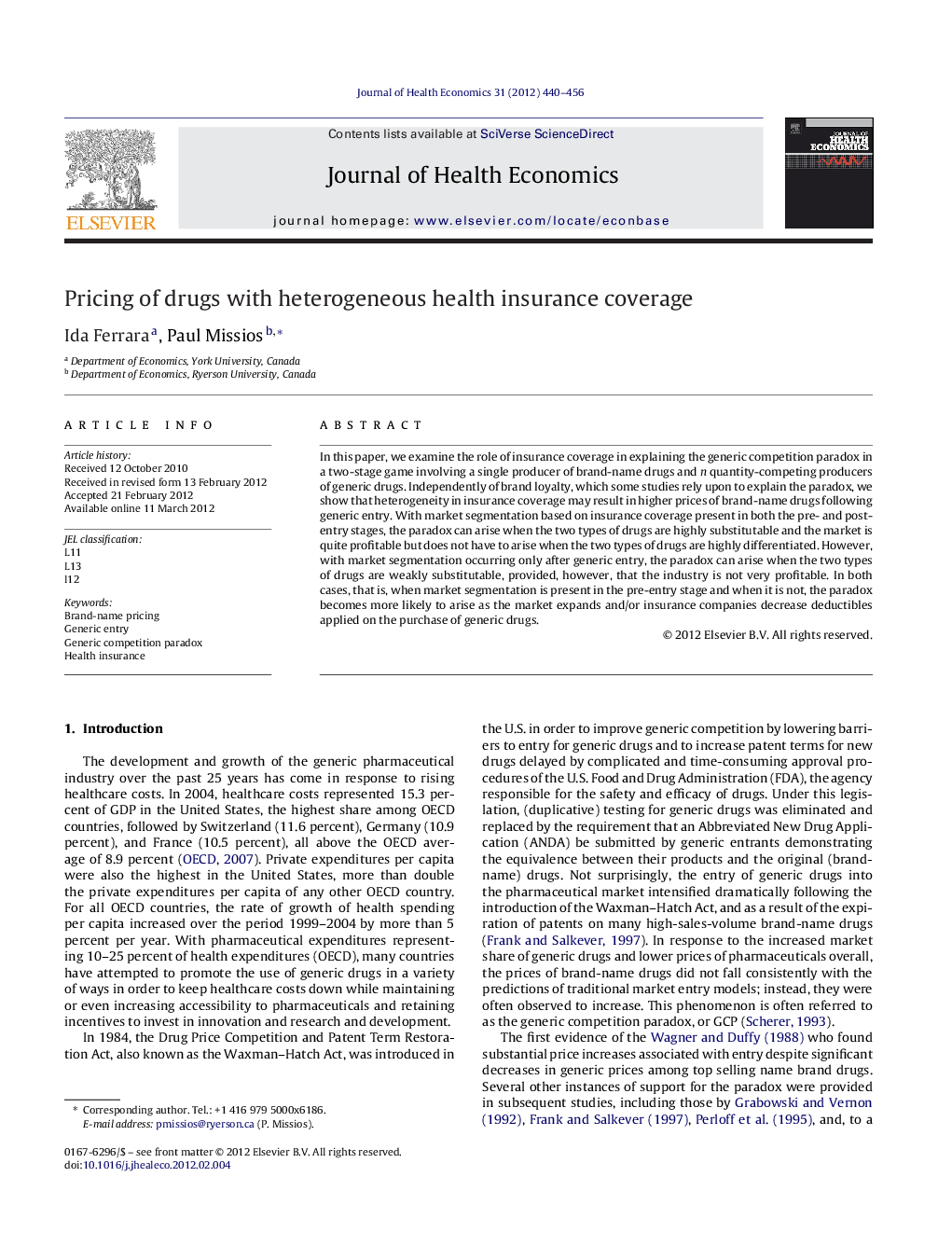| Article ID | Journal | Published Year | Pages | File Type |
|---|---|---|---|---|
| 961827 | Journal of Health Economics | 2012 | 17 Pages |
Abstract
In this paper, we examine the role of insurance coverage in explaining the generic competition paradox in a two-stage game involving a single producer of brand-name drugs and n quantity-competing producers of generic drugs. Independently of brand loyalty, which some studies rely upon to explain the paradox, we show that heterogeneity in insurance coverage may result in higher prices of brand-name drugs following generic entry. With market segmentation based on insurance coverage present in both the pre- and post-entry stages, the paradox can arise when the two types of drugs are highly substitutable and the market is quite profitable but does not have to arise when the two types of drugs are highly differentiated. However, with market segmentation occurring only after generic entry, the paradox can arise when the two types of drugs are weakly substitutable, provided, however, that the industry is not very profitable. In both cases, that is, when market segmentation is present in the pre-entry stage and when it is not, the paradox becomes more likely to arise as the market expands and/or insurance companies decrease deductibles applied on the purchase of generic drugs.
Related Topics
Health Sciences
Medicine and Dentistry
Public Health and Health Policy
Authors
Ida Ferrara, Paul Missios,
